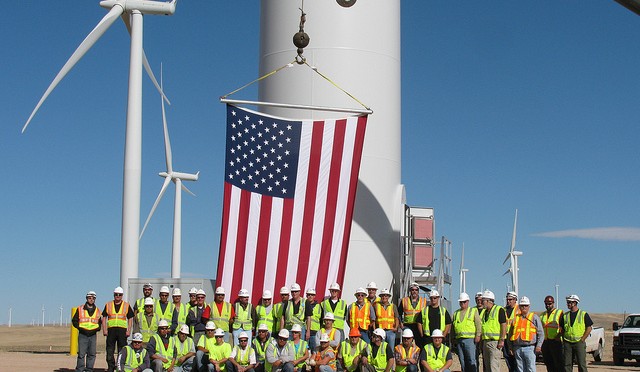A landowner wind energy association would have benefits for farmers dealing with wind and land resources.
As the demand for and increasing number of proposed wind energy projects escalate in Iowa, it would be wise for affected landowners to team up to maximize their economic benefits.
A landowner wind energy association, or LWEA, consists of a group of landowners who have decided to work together to have more control than they would have individually over the wind leasing process impacting their property.
The members of an LWEA work together for compensation that reflects the true value of their wind and land resource. The LWEA model is a way to address some concerns with wind development as well as provide landowners with some control in the process.
Benefits of LWEA membership include:
*Diminishing the power of developers to divide landowners by offering different terms to neighbors.
*Preventing unnecessary loss of property rights.
*Limiting the presence of speculators (a.k.a. land grabbers) who convince landowners to sign agreements for a proposed wind project they never intend to build.
The primary goal of an LWEA is to provide a stronger bargaining position for landowners when negotiating for lease terms with a wind developer. It is the collective wind and land resource of all the members of the association that provide this strength. All of the work of an LWEA is done
before any option or lease agreements are signed with a wind energy developer.
An LWEA can chose to do as much or as little of the pre-development work as they want (i.e. wind resource
assessments, environmental impact studies, and/or geological surveys).
By using their collective resource as a marketing tool, an LWEA seeks to ensure that members are paid accurately for the use of their land and wind resource. To do this, an LWEA assembles a request for proposals (“RFP”) that details the desirable characteristics of their pooled land, wind and community resources; and also lists landowner expectations, which of course include appropriate compensation.
Contiguous acres are of prime appeal to wind developers for the flexibility and options they can provide.
The RFP is sent to wind energy developers who then enter a competitive bidding process. It is the members of an LWEA that vote on which developer to work with.
LWEAs also serve to educate their members on wind energy and about the wind energy development process. In fact, the political strength of the association in the local community has the potential to help ensure that local wind energy ordinances are not only favorable to wind development, but also the local community.
A side benefit to developers is that there is a group of local residents who are already supportive of wind energy and who have done as much up-front work as possible.
*How does a landowner wind energy association work?
In general an LWEA will be structured as a limited liability corporation or LLC. This type of business structure best protects the individual members from any potential liability. Landowners who are interested in joining will sign an operating agreement that details how the association will be
governed, how much the membership fees are, how members can vote, how long the operating agreement will last, and when the LLC will terminate. It is not uncommon for the operating agreement to last only two years.
Once officially formed, the members will appoint a volunteer board of directors to handle the RFP and to keep everyone informed on their progress. The board will send out the RFP, collect the responses from developers, and distribute the information to all members for a vote.
An LWEA will hire an attorney to negotiate with the selected developer for common lease terms that will apply to all members of the association. These common terms will include the landowner compensation amounts, both for land use and leasing as well as energy production royalty payments.
The operating agreement will detail if and how the common lease terms may be changed. However, changes will generally require approval from a majority of the members.
For example, a typical operating agreement may say that land lease payments will go to each landowner individually but all royalty payments will be combined and divided as follows:
55% will go to landowners who host turbines, and be divided according to the energy produced on their land, and
45% will go to all members and be divided on a per-acre basis.
After negotiations are complete, each landowner will sign a contract with the developer containing the agreed upon common lease terms as well as any particular site-specific provisions that the landowner may have worked out with the developer. It is at this point that the formal LLC no
longer exists; the wind farm development process proceeds as if each landowner had negotiated with the developer separately.
The major difference is that there will be some members who do not host turbines on their land but who will receive a portion of the royalty payments based on their membership in the LWEA.
Instead of neighbors competing for turbine payments, all association members know they will benefit from the wind project, regardless of who hosts the turbines.
This is a significant strategy to both allow more local residents to benefit from conventional wind farm development and assist developers in gaining community acceptance for their projects.
http://www.windustry.org/introduction-to-landowner-wind-energy-associations


